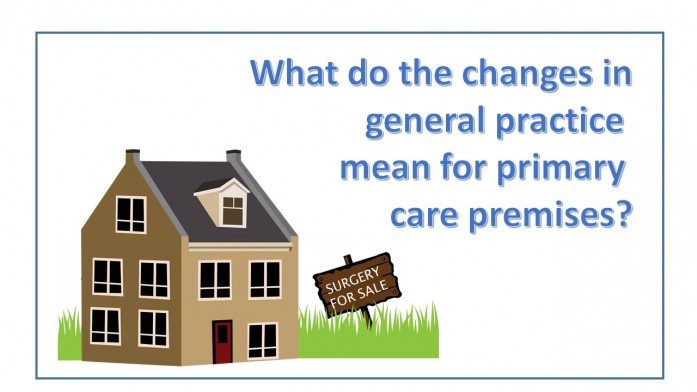The secret to what will happen in the future to primary care premises lies in the past. Understanding the current crisis in general practice provides vital clues as to the impact the new models of care and the like will have on estates.
The growth in demand on general practice (the number of consultations per head of population has more than doubled in recent years, in addition to the overall population growth) has not been matched by a similar growth in resources. The general practice estate is no longer big enough. Worse, the growth in regulation and the shift to NHS Property Services means the existing estate is becoming more and more of a cost pressure. Even though new, bigger premises are desirable, they are not necessarily affordable.
There are also less and less GP partners. In the last 10 years the number of GP partners has dropped by 9% while the number of salaried GPs has increased by 260%. As GP partners have become harder to recruit, many places have had to look at how to drop the requirement to buy into the property in order to attract new partners. As a result, GPs and GP practices are increasingly looking to “cash in” their property.
To cope with the pressures, general practice is making changes to the way it operates. New roles, such as pharmacists, physiotherapists and paramedics are being introduced to the practice; but only, of course, where they have the space. Less commonly, but increasingly representing the overall direction of travel, a number of places such as St Austell, Plymouth and Hampshire, are operating an urgent care “hub” – a single site where all of the on the day demand is seen by a multidisciplinary team, freeing up space on the other sites for longer planned and follow up appointments. And bigger practices are considering whether consolidation onto a smaller number of sites is possible in future.
But surely the Estates and Technology Fund has been put in place to address the estates problems in general practice? While the reduction in the match funding requirement is welcome (down from 33% to 0%), few practices so far have been able to benefit from the fund, especially compared to the number who spent hours completing the paperwork to bid for it in the first place. Revenue consequences of new builds remain a problem for practices and CCGs alike, and the old notion that these simply have to be “absorbed” no longer washes.
The challenges general practice is experiencing mean some are looking to partner with other organisations to more effectively manage the demand. We are seeing more examples of practices joining up with volunteers and voluntary groups to offer more holistic care, and of practices trying to build links with community services. But space is a real barrier for many. Partnership working inevitably means some degree of co-location, and practices are not sat on empty rooms, waiting to be filled.
It may be that as a result of the new Sustainability and Transformation Plans (STPs) we have a reversion to some sensible join up of strategic estates planning, which will incorporate primary care premises. But it will need to happen quickly. In the meantime, the reality is that the new multispecialty community provider (MCP) and Primary and Acute Care Services (PACS) models offer a way out for general practice. When we dig underneath why GP practices are signing up to these new models, it is largely because these new contracts are offering to buy them out of their premises. Without this incentive, it is hard to see much movement towards them.
The pressure on general practice is such at present that if an attractive way out is presented, many are likely to take it. In the future, the trend will be to an increasing split of “hot” and “cold” GP sites, accelerated by the funding on its way for additional GP access. The move to operating at scale will ultimately lead to a reduction rather than an increase in the number of GP practice sites. And the development of MCPs and PACS models will see the estates increasingly owned by the community and acute trusts, within these new organisational forms.


No Comments